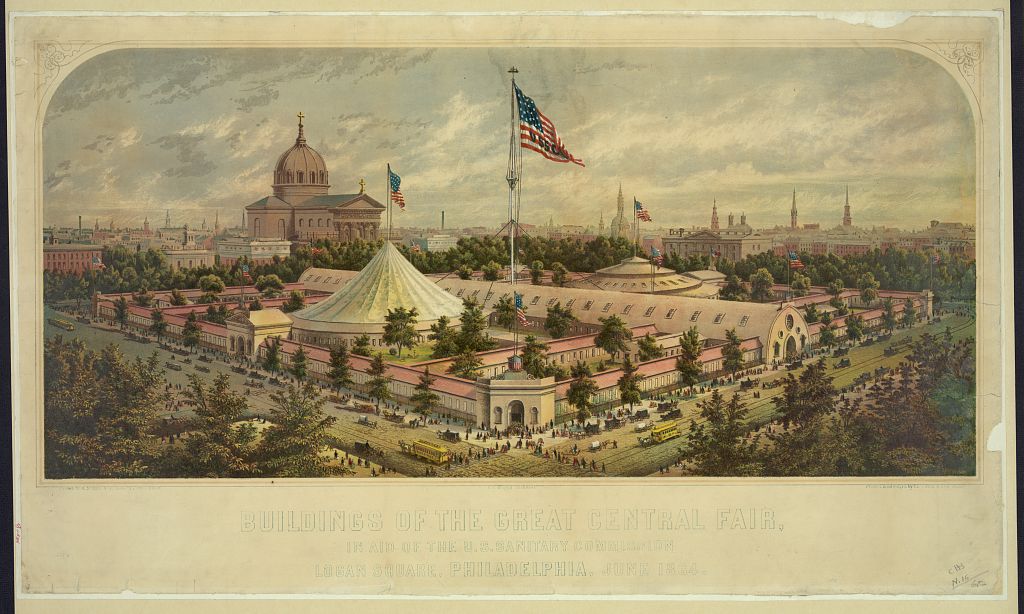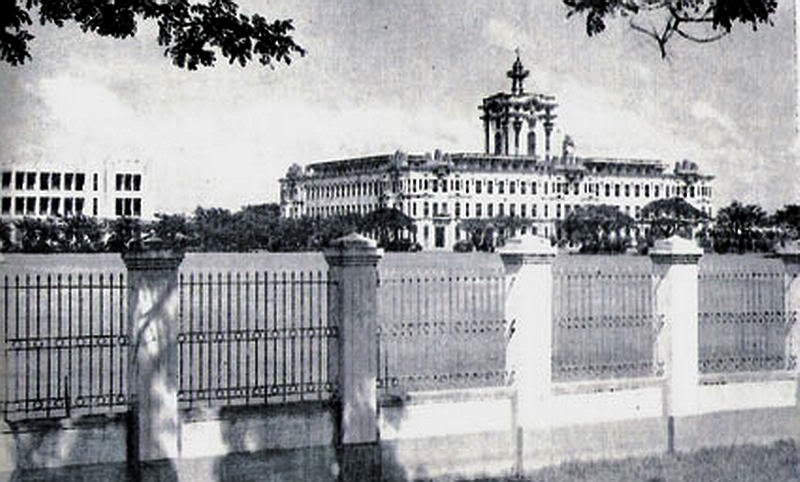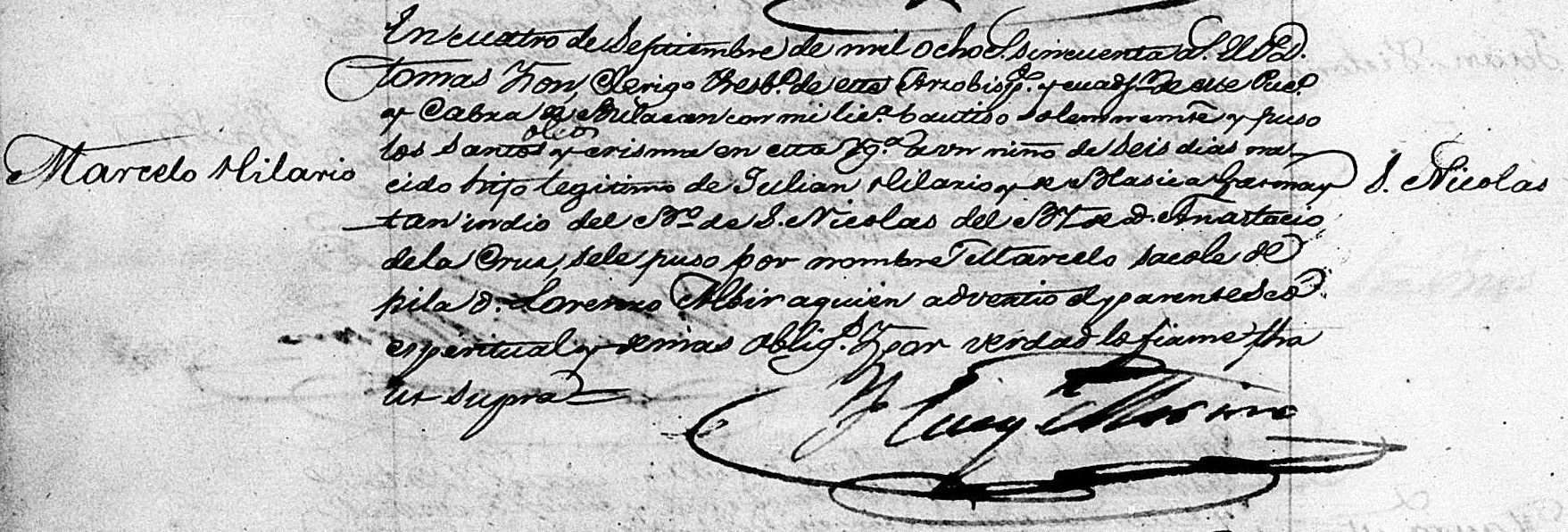|
Félix Resurrección Hidalgo
Félix Resurrección Hidalgo y Padilla (February 21, 1855 – March 13, 1913) was a Filipino artist. He is acknowledged as one of the greatest Filipino painters of the late 19th century, and is significant in Philippine history for having been an acquaintance and inspiration for members of the Philippine reform movement which included José Rizal, Marcelo del Pilar, Mariano Ponce, and Graciano López Jaena, although he neither involved himself directly in that movement, nor later associated himself with the First Philippine Republic under Emilio Aguinaldo. His winning the silver medal in the 1884 Madrid Exposition of Fine Arts, along with the gold win of fellow Filipino painter Juan Luna, prompted a celebration which was a major highlight in the memoirs of members of the Philippine reform movement, with Rizal toasting to the two painters' good health and citing their win as evidence that Filipinos and Spaniards were equals. Early life and education Hidalgo was born in B ... [...More Info...] [...Related Items...] OR: [Wikipedia] [Google] [Baidu] |
Binondo, Manila
Binondo (; ) is a district in Manila and is referred to as the city's Chinatown. Its influence extends beyond to the places of Quiapo, Santa Cruz, San Nicolas and Tondo. It is the oldest Chinatown in the world, established in 1594 by the Spaniards as a settlement near Intramuros but across the Pasig River for Catholic Chinese; it was positioned so that the colonial administration could keep a close eye on their migrant subjects. It was already a hub of Chinese commerce even before the Spanish colonial period. Binondo is the center of commerce and trade of Manila, where all types of business run by Chinese Filipinos thrive. Noted residents include Saint Lorenzo Ruiz, the Filipino protomartyr, and Venerable Mother Ignacia del Espiritu Santo, founder of the Congregation of the Religious of the Virgin Mary. Etymology Numerous theories on the origin of the name "Binondo", and that of "Tondo", its neighboring district, have been put forward. Philippine National Artist Nick ... [...More Info...] [...Related Items...] OR: [Wikipedia] [Google] [Baidu] |
Real Academia De Bellas Artes De San Fernando
The Real Academia de Bellas Artes de San Fernando (RABASF; ), located on the Calle de Alcalá in the centre of Madrid, currently functions as a museum and gallery. A public law corporation, it is integrated together with other Spanish royal academies in the . History The academy was established by royal decree in 1752. About twenty years later, the enlightened monarch Charles III purchased a palace in Madrid as the academy's new home. The building had been designed by José Benito de Churriguera for the Goyeneche family. The king commissioned Diego de Villanueva to convert the building for academic use, employing a neoclassical style in place of Churriguera's baroque design. The academy is also the headquarters of the Madrid Academy of Art. Notable alumni The first graduate of the academy was Bárbara María Hueva. Francisco Goya was once one of the academy's directors. Its alumni include Felip Pedrell, Pablo Picasso, Kiko Argüello, Remedios Varo, Salvador Dalí, ... [...More Info...] [...Related Items...] OR: [Wikipedia] [Google] [Baidu] |
Centennial Exposition
The Centennial International Exhibition, officially the International Exhibition of Arts, Manufactures, and Products of the Soil and Mine, was held in Philadelphia, Pennsylvania, from May 10 to November 10, 1876. It was the first official world's fair to be held in the United States and coincided with the centennial anniversary of the United States Declaration of Independence, Declaration of Independence's adoption in Philadelphia on July 4, 1776. It was held in Fairmount Park along the Schuylkill River on fairgrounds designed by Herman J. Schwarzmann. Nearly 10 million visitors attended the exposition, and 37 countries participated in it. Precursor The Great Central Fair on Logan Square, Philadelphia, Logan Square in Philadelphia, in 1864, also known as the Great Sanitary Fair, was one of the many United States Sanitary Commission's Sanitary Fairs held during the American Civil War. The fairs provided a creative and communal means for ordinary citizens to promote the ... [...More Info...] [...Related Items...] OR: [Wikipedia] [Google] [Baidu] |
University Of Santo Tomas
The University of Santo Tomas (UST; ), officially the Pontifical and Royal University of Santo Tomas, The Catholic University of the Philippines or colloquially as ''Ustê'' (), is a Private university, private Catholic school, Catholic research university in Manila, Philippines. Founded on April 28, 1611, by Spaniards, Spanish friar Miguel de Benavides, third Roman Catholic Archdiocese of Manila, Archbishop of Manila, it has the List of the oldest schools in the Philippines, oldest Extant literature, extant university charter in Asia and is one of the world's largest Catholic universities in terms of enrollment found on one campus. It is the main campus of the University of Santo Tomas System that is run by the Dominican Order, Order of Preachers. UST was granted the title ''Royal'' by Charles III of Spain, King Charles III of Spain in 1785. Pope Leo XIII made UST a pontifical university in 1902. Pope Pius XII bestowed the title of ''The Catholic University of the Philippines'' ... [...More Info...] [...Related Items...] OR: [Wikipedia] [Google] [Baidu] |
Filipino Lawyer Don Narciso Padilla Circa 1950s
Filipino may refer to: * Something from or related to the Philippines ** Filipino language, a de facto standardized variety of Tagalog, the national language, and one of the two official languages of the Philippines ** Filipinos, people who are natives, citizens and/or nationals of the Philippines, natural-born or naturalized * Filipinos (snack food), a brand cookies manufactured in Europe See also * Filippino (given name) * * * Filipinas (other) Filipinas may refer to: * Women in the Philippines * ''Filipinas, letra para la marcha nacional'', the Spanish poem by José Palma that eventually became the Filipino national anthem. * The original Spanish name, and also used in different P ... {{disambiguation Language and nationality disambiguation pages ... [...More Info...] [...Related Items...] OR: [Wikipedia] [Google] [Baidu] |
Juan Luna
Juan Luna de San Pedro y Novicio (, ; October 25, 1857 – December 7, 1899) was a Filipino painter, sculptor and a political activism, activist of the Philippine Revolution during the late 19th century. He became one of the first recognized Philippine artists. His winning of the gold medal in the 1884 Madrid Exposition of Fine Arts, along with the silver win of fellow Filipino painter Félix Resurrección Hidalgo, prompted a celebration which was a significant highlight in the memoirs of members of the Propaganda Movement, with the fellow ''Ilustrados'' toasting the two painters' good health and the brotherhood between Spain and the Philippines. Well regarded for work done in the manner of European academies of his time, Luna painted literary and historical scenes, some with an underscore of political commentary. His allegorical works were inspired by classical balance, and often showed figures in theatrical poses. Biography Early life Born in the town of Badoc, I ... [...More Info...] [...Related Items...] OR: [Wikipedia] [Google] [Baidu] |
Emilio Aguinaldo
Emilio Aguinaldo y Famy (: March 22, 1869February 6, 1964) was a Filipino revolutionary, statesman, and military leader who became the first List of presidents of the Philippines, president of the Philippines (1899–1901), and the first president of an Asia (continent), Asian constitutional republic. He served the 2nd shortest term as president of the Philippines, lasting for only 2 years and 27 days, only behind Sergio Osmeña by 516 days, of which, he only lasted from August 1, 1944 to May 28, 1946. He led the Philippine forces first against Spain in the Philippine Revolution (1896–1898), then in the Spanish–American War (1898), and finally against the United States during the Philippine–American War (1899–1901). He is regarded in the Philippines as having been the country's first president during the period of the First Philippine Republic, though he was not recognized as such outside of the Philippine Revolution, revolutionary Philippines. Aguinaldo is known as a ... [...More Info...] [...Related Items...] OR: [Wikipedia] [Google] [Baidu] |
First Philippine Republic
The Philippine Republic (), now officially remembered as the First Philippine Republic and also referred to by historians as the Malolos Republic, was a state established in Malolos, Bulacan, during the Philippine Revolution against the Spanish Empire (1896–1898) and the Spanish–American War between Spain and the United States (1898) through the promulgation of the Malolos Constitution on January 23, 1899, succeeding the Revolutionary Government of the Philippines (1898–1899), Revolutionary Government of the Philippines. It was formally established with Emilio Aguinaldo as president. (English translation by Sulpicio Guevara) It was unrecognized outside of the Philippines but remained active until April 19, 1901. Following the American victory at the Battle of Manila Bay, Aguinaldo returned to the Philippines, issued the Philippine Declaration of Independence on June 12, 1898, and proclaimed successive revolutionary Philippine governments on June 18 and 23 of that year. In ... [...More Info...] [...Related Items...] OR: [Wikipedia] [Google] [Baidu] |
Graciano López Jaena
Graciano López y Jaena (December 18, 1856 – January 20, 1896), commonly known as Graciano López Jaena (), was a Filipino journalist, orator, reformist, and national hero who is well known for his newspaper, '' La Solidaridad'' (December 13,1888. Philippine historians regard López Jaena, along with Marcelo H. del Pilar and José Rizal, as the triumvirate of Filipino propagandists. Of these three ''ilustrados'', López Jaena was the first to arrive in Spain and may have begun the Propaganda Movement, which advocated the reform of the then-Spanish colony of the Philippines and which eventually led to the armed Philippine Revolution that begun in Manila in 1896. The Propaganda Movement was a key step towards a Philippine national identity. Biography Graciano López Jaena was born in Jaro, Iloilo, in the Captaincy General of the Philippines in the Spanish Empire on December 18, 1856. His parents were Plácido López and María Jacoba Jaena. He was baptized as "Graciano L� ... [...More Info...] [...Related Items...] OR: [Wikipedia] [Google] [Baidu] |
Mariano Ponce
Mariano Ponce y Collantes (; March 22, 1863 – May 23, 1918) commonly known as just Mariano Ponce was a Filipino physician, writer, statesman, and active member of the Propaganda Movement. In Spain, he was among the founders of ''La Solidaridad'' and ''Asociación Hispano-Filipino''. Among his significant works was ''Efemerides Filipinas'', a column on historical events in the Philippines which appeared in ''La Oceania Española'' (1892–1893) and ''El Ideal'' (1911–1912). He wrote ''Ang Wika at Lahi'' (1917), a discussion on the importance of a national language. He also served as Bulacan's representative to the Philippine Assembly from 1909 to 1912. Biography Ponce was born in Baliuag, Bulacan, Baliuag, Bulacan to Mariano Ponce and Maria Collantes. He had six siblings: Vicente, Fransisco, Jacinto, Carmen, Pedro, and Consolacion Ponce. He also completed his primary education in Baliuag. He completed his secondary education at the private school of Juan Evangelista, Hugo ... [...More Info...] [...Related Items...] OR: [Wikipedia] [Google] [Baidu] |
Marcelo Del Pilar
Marcelo Hilario del Pilar y Gatmaitán (; ; August 30, 1850July 4, 1896), commonly known as Marcelo H. del Pilar and also known by his ''nom de plume'' Pláridel,.''Filipinos in History: Volume II'', National Historical Institute, 1990, p. 101 was a Filipino writer, lawyer, journalist, and freemason. Del Pilar, along with José Rizal and Graciano López Jaena, became known as the leaders of the Reform Movement in Spain. Del Pilar was born and brought up in Bulakan, Bulacan. He was suspended at the Universidad de Santo Tomás and imprisoned in 1869 after he and the parish priest quarreled over exorbitant baptismal fees. In the mid-1880s, he expanded his anti-friar movement from Malolos to Manila.. He went to Spain in 1888 after an order of banishment was issued against him. Twelve months after his arrival in Barcelona, he succeeded López Jaena as editor of the '' La Solidaridad'' (The Solidarity). Publication of the newspaper stopped in 1895 due to lack of funds. Losing hope ... [...More Info...] [...Related Items...] OR: [Wikipedia] [Google] [Baidu] |






